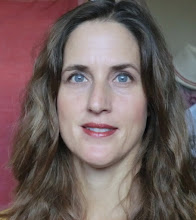 This painting has recently been sold to the Butlers, who I now regard as my patrons. They are the proud owners of six Adie Parkers.
This painting has recently been sold to the Butlers, who I now regard as my patrons. They are the proud owners of six Adie Parkers.The Florentine Painting was quite an involved process. Wonderfully tactile due to the use of tissue paper and gouache, a chalk based watercolour pigment.
Some History
The three marble and bronze sculptures above the Gates of Paradise symbolise The Baptism of Christ.
The *Florence Baptistry* or *Battistero di San Giovanni* (Baptistery of St. John) is a religious building in Florence (Tuscany), Italy, which has the statues of a minor basilica.
The octagonal Bapistry stands in the Piazza del Duomo, across from the Duomo cathedral and the Giotto bell tower (Campanile di Giotto). It is one of the oldest buildings in the city, built between 1059 and 1128. The architecture is in Florentine Romanesque style.
The Baptistry is renowned for its three sets of artistically important bronze doors with relief sculptures by Lorenzo Ghiberti . These doors were dubbed by Michelangelo "the Gates of Paradise" because of their beauty, and they were said to have begun the Renaissance.
The Italian poet, Dante Alighieri and many famed artists and leaders of the Renaissance, including members of the Medici family, were baptized here. Until the end of the 19th century, all Catholic Florentines were baptized in this Bapistry.
Method
I started by applying a light to mid tone wash over the background using permanent rose and quinacridone gold. I think I added some blue to it as well. One must use a pre-stretched paper or heavier weight, so I used a 640gms Saunders Waterford Paper. Once bone dry a layer of watered down PVA glue is applied to the surface of the paper. It does dry to a clear finish. The white (matt) tissue paper which has already been scrunched up and re straightened is then stuck down using a roller. It obviously has many creases in it and that is the joy of going through these processes.
I then started to paint the shapes of the façade and made use of negative spaces and shadows to suggest form. I find it easier to leave out the drawing stage as it becomes fiddly. Once all the watercolour layers are finished, I then focused on the statues. I used gouache and watercolour combinations to achieve the 'whites', and gouache was also applied to other areas that needed it. One must always be aware of balance and not overdoing a medium if one doesn't have to.
I do love unfinished edges and the power of suggestion, so I was really thrilled with this painting.

No comments:
Post a Comment